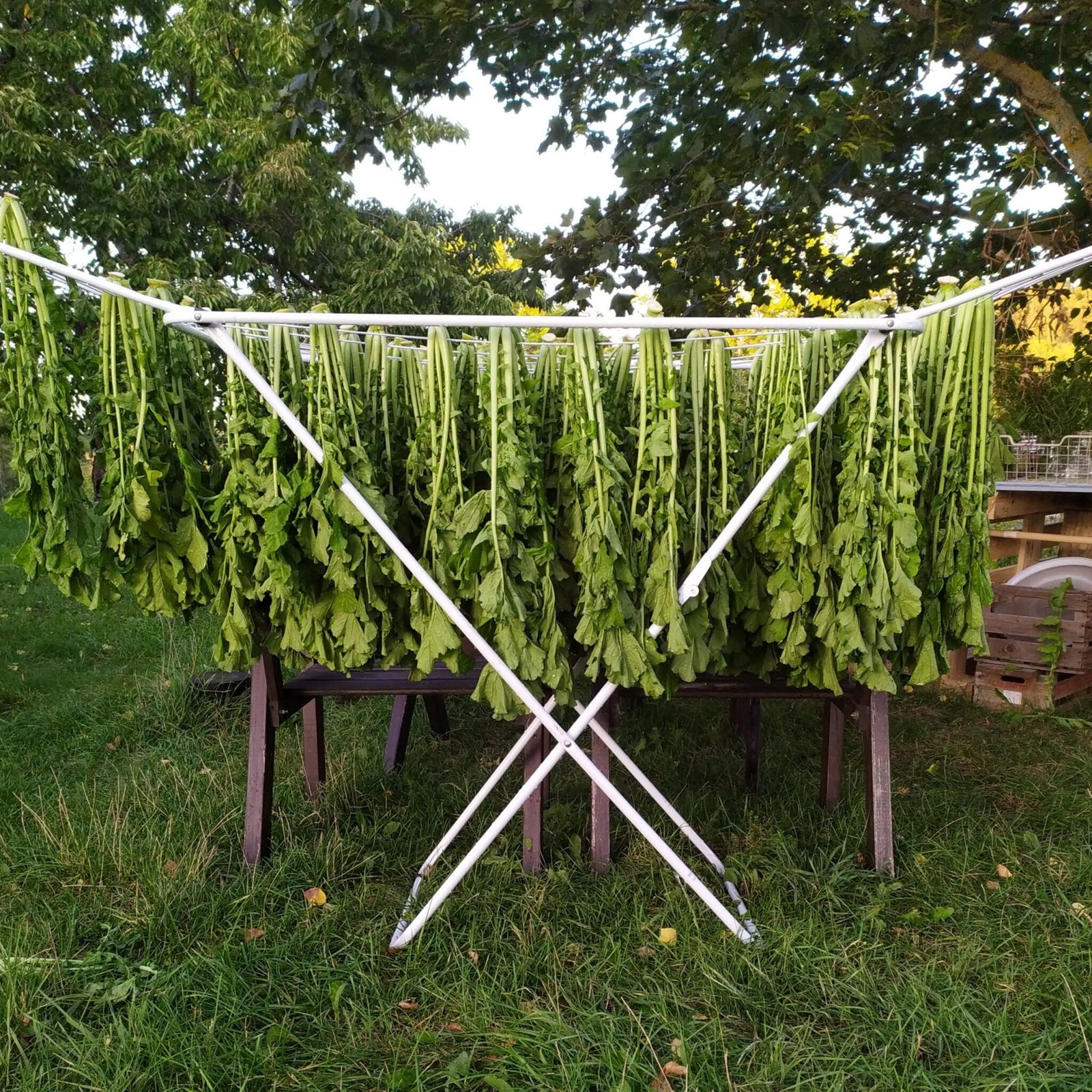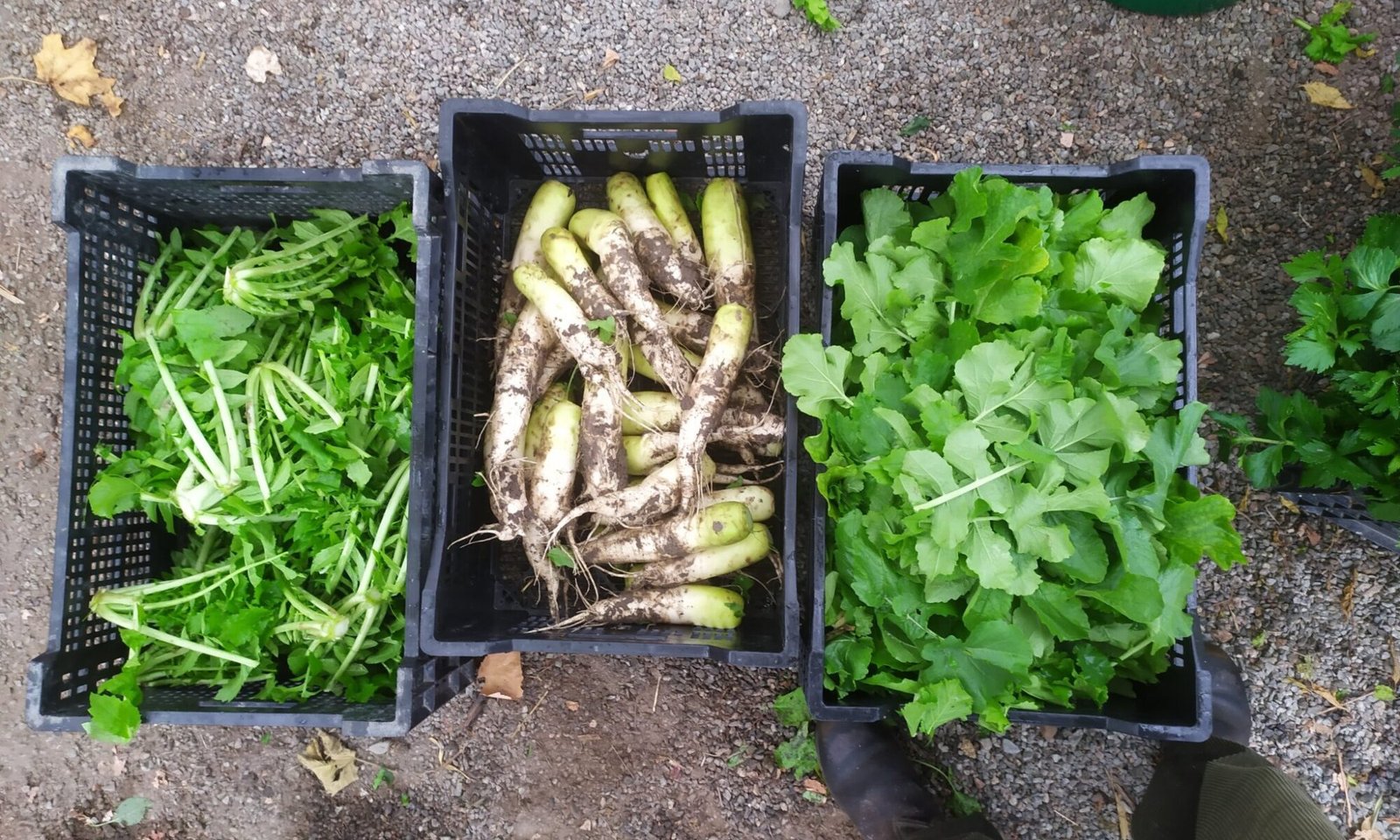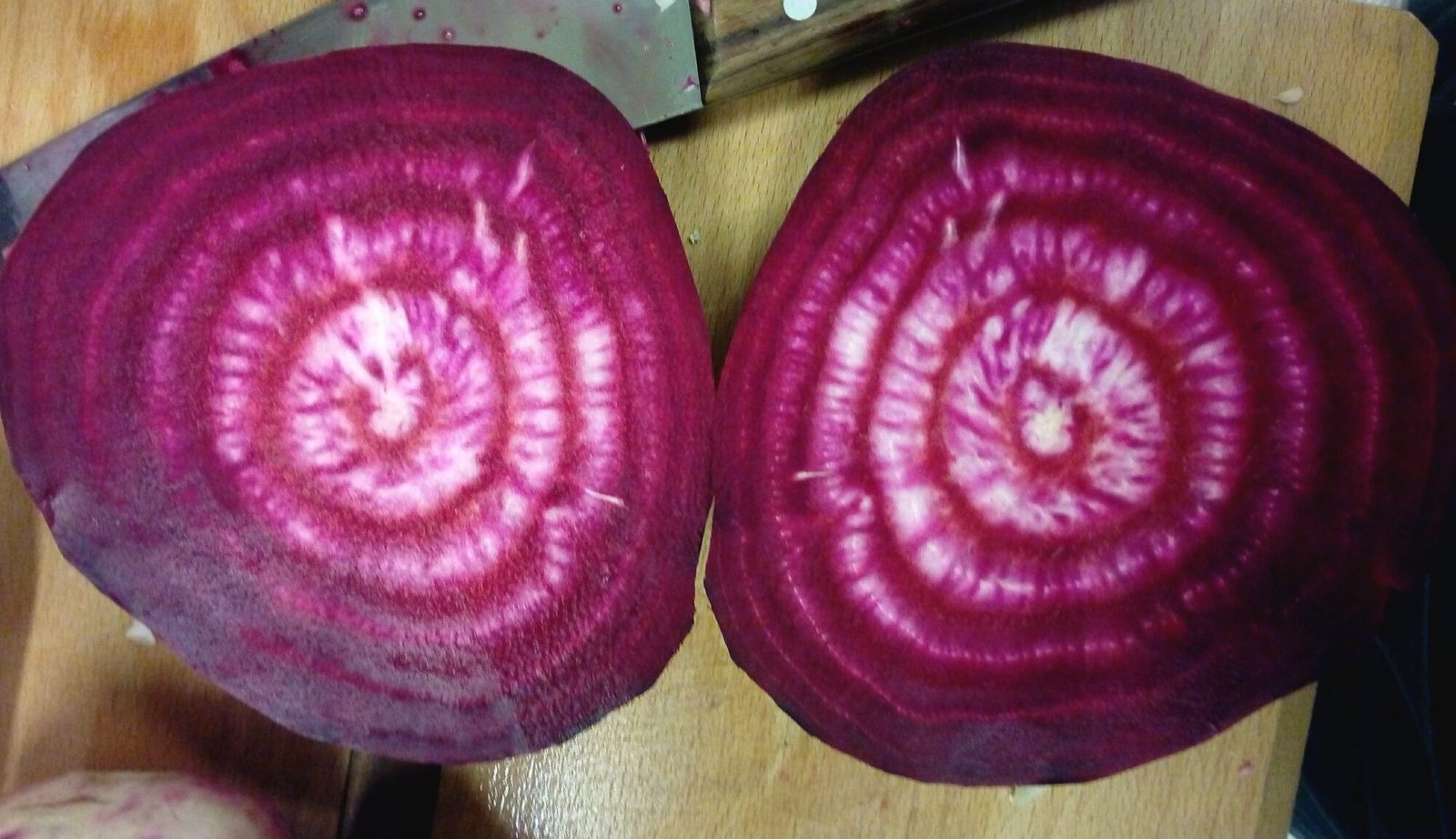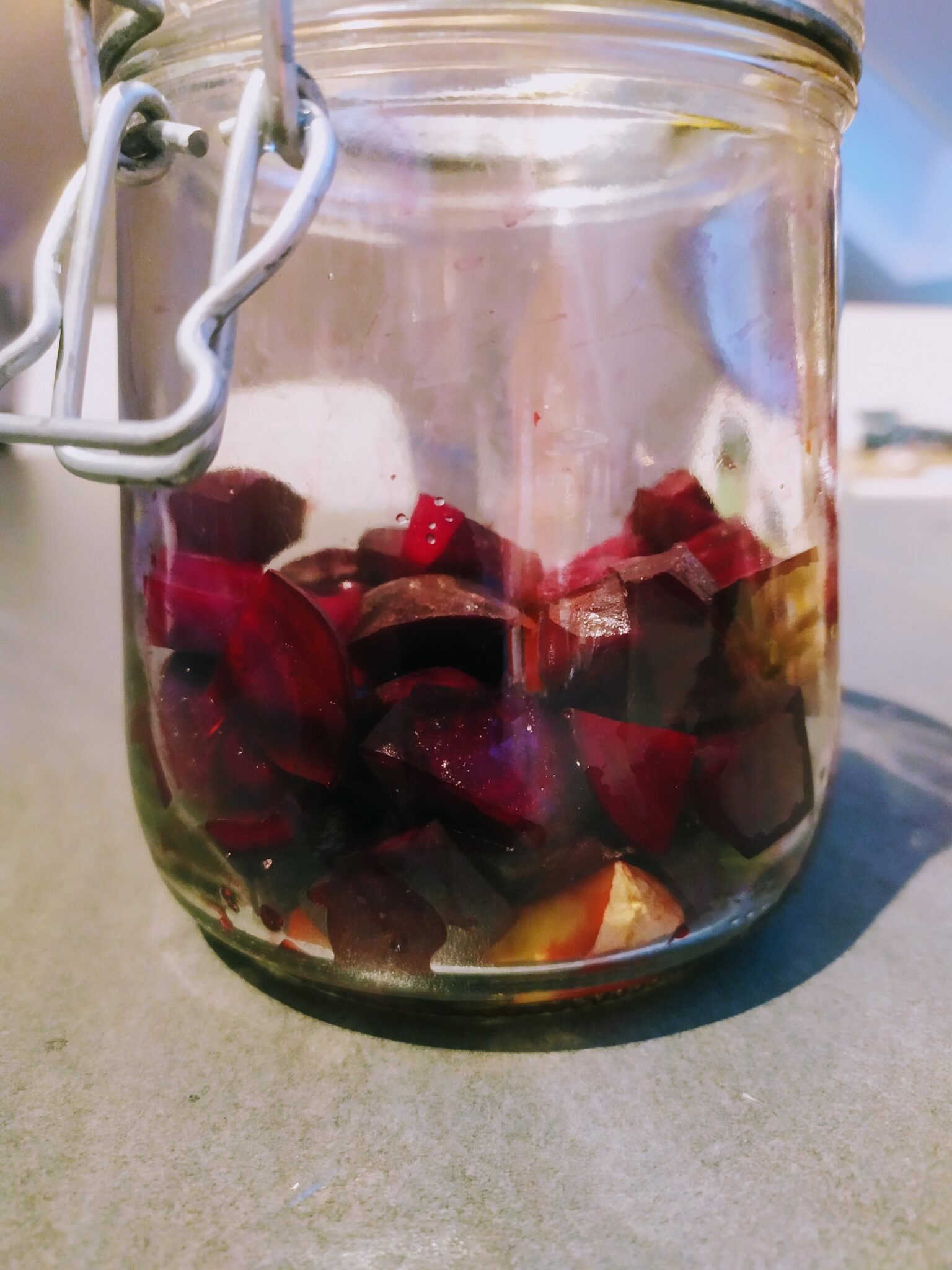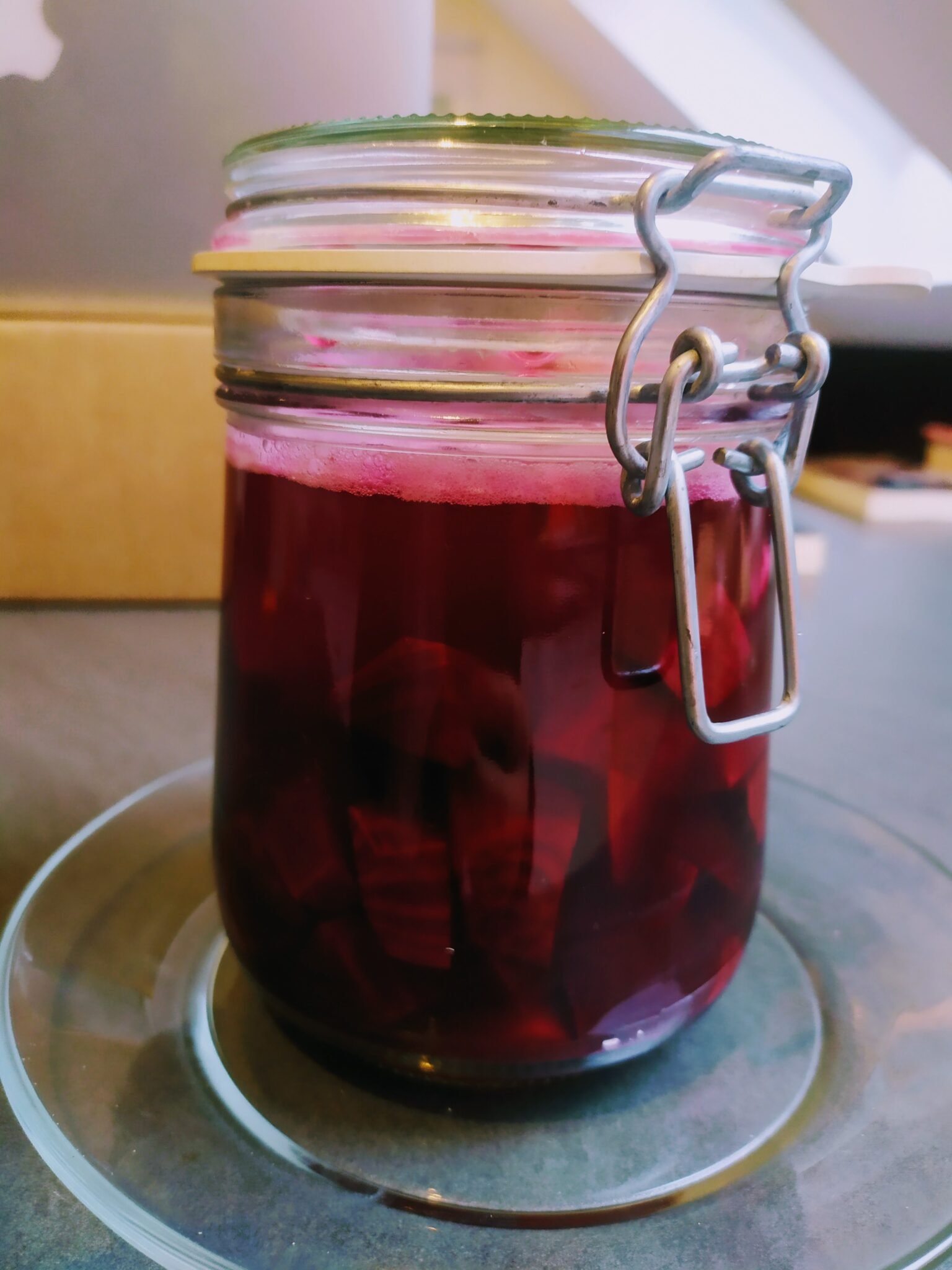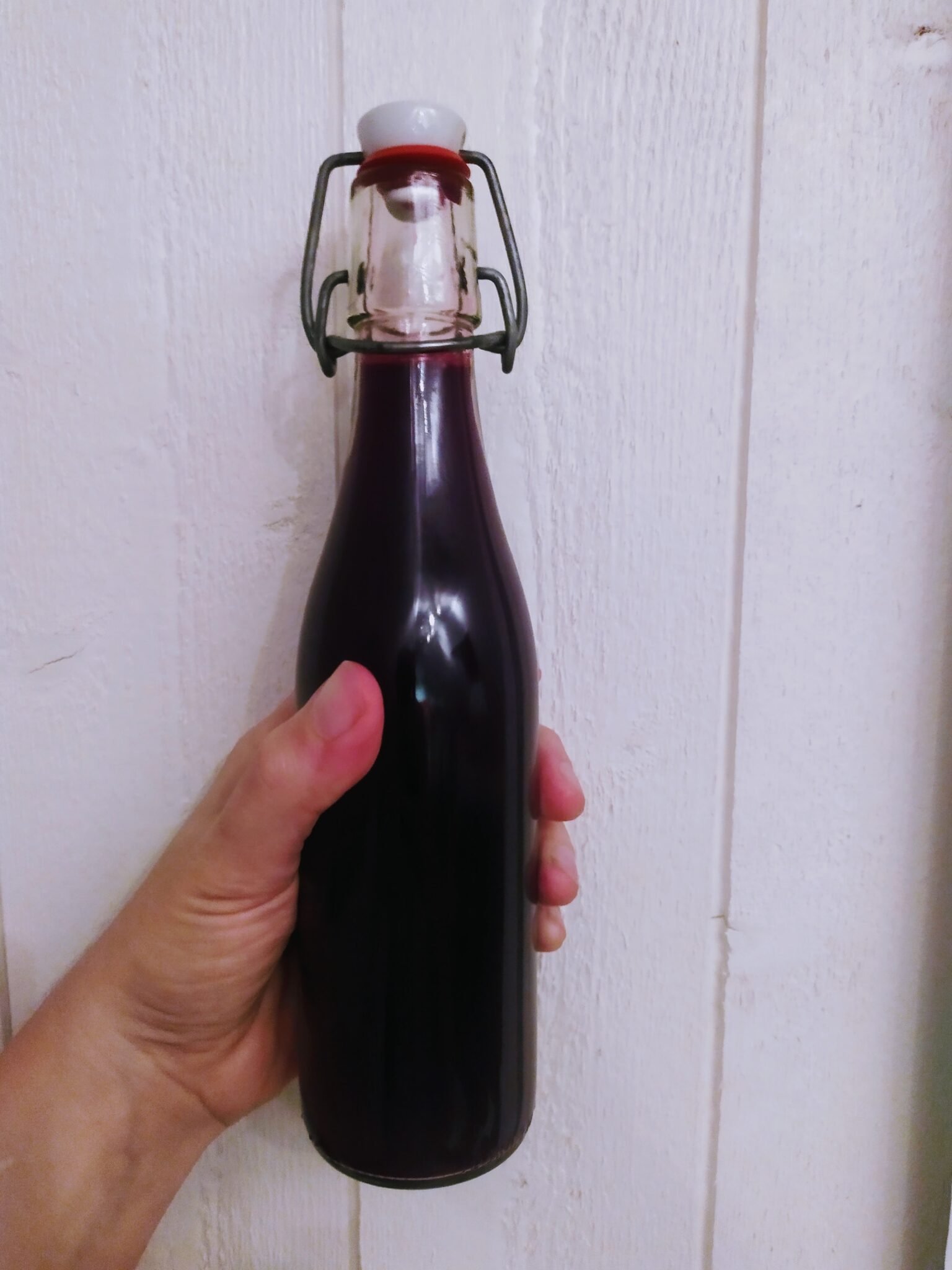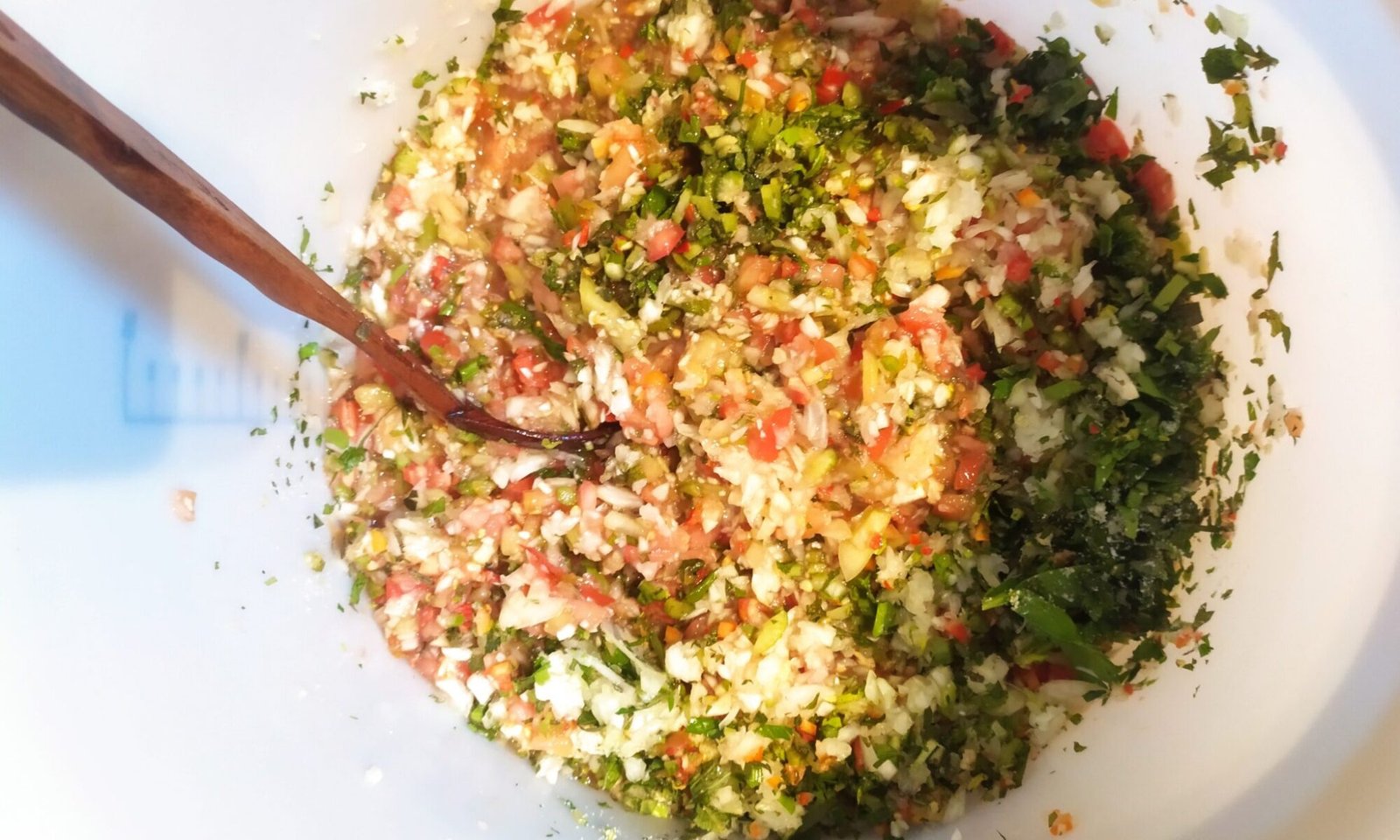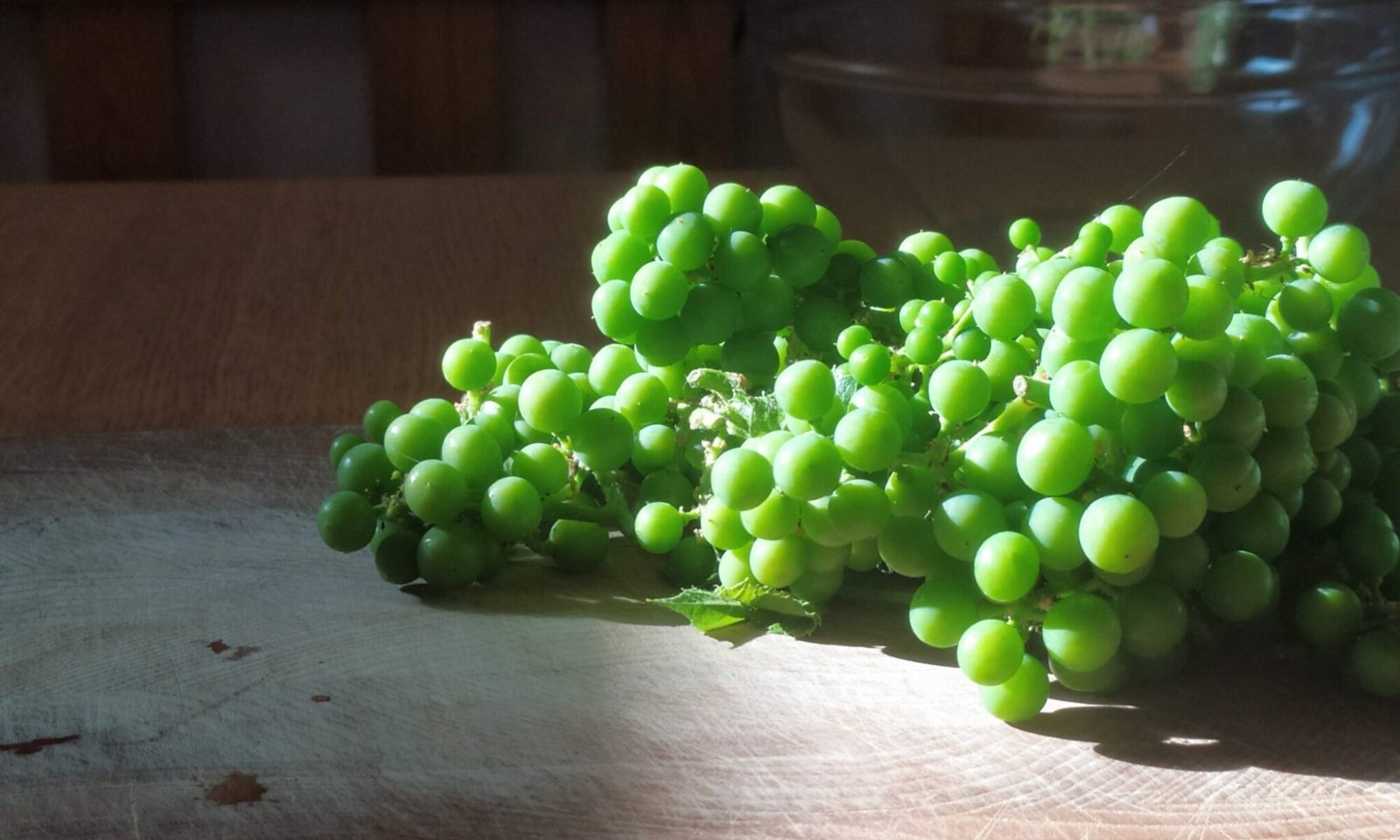Daikon – Raphanus sativus var. longipinnatus – is a vegetable with a bright future. It is easy to grow, versitile and can take on an amazing spectrum of flavours and texures. It is already cultivated in large quantities in many parts of the world. Just like many other Asian cabbage varieties, it doesn’t deal well with the midsummer light in Sweden so I usually sow it outdoors at the end of July/beginning of August. This way, it becomes an important ingredient in autumn kimchi or as a great storing vegetable for the winter.
BUT, it is also possible to cultivate it in the spring! My friends at Skäve Trädgård in Järna have been sowing daikon in cold greenhouses at the end of March (if sown later, it easily goes to seed) and start harvesting large tender roots as early as the beginning of May – they grow astonishingly fast. In addition to fermentation, it is delicious when eaten raw and finely grated on rice (with a little soy sauce), in bibimbap, miso soup, a hummus sandwich, spicy curry – anything and everything. You can use the stems and leaves like spinach in hot dishes or make kimchi although this kimchi is pungent and not for the faint-hearted.
You can find seeds for three kinds of daikon at Runåbergs.
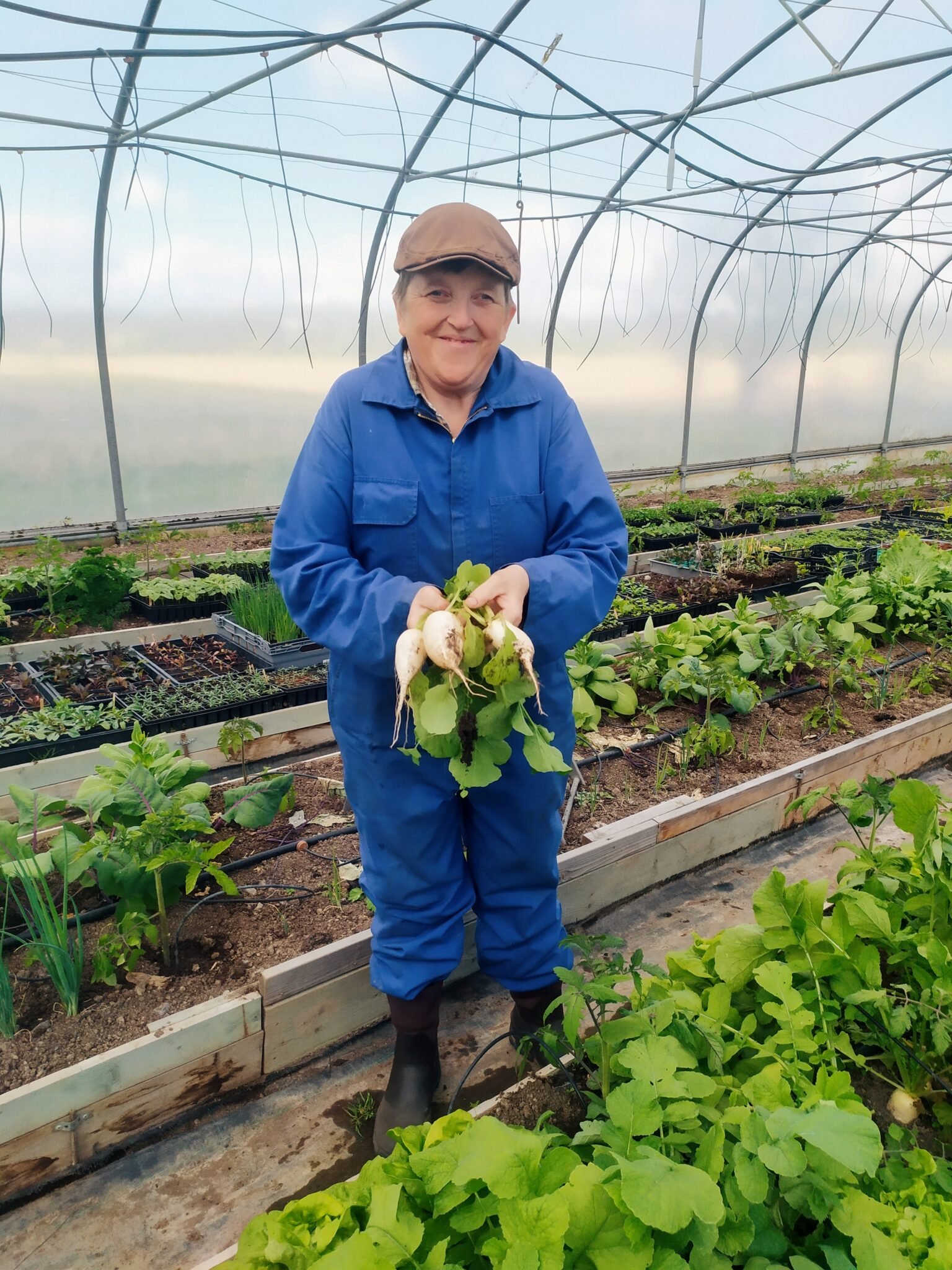
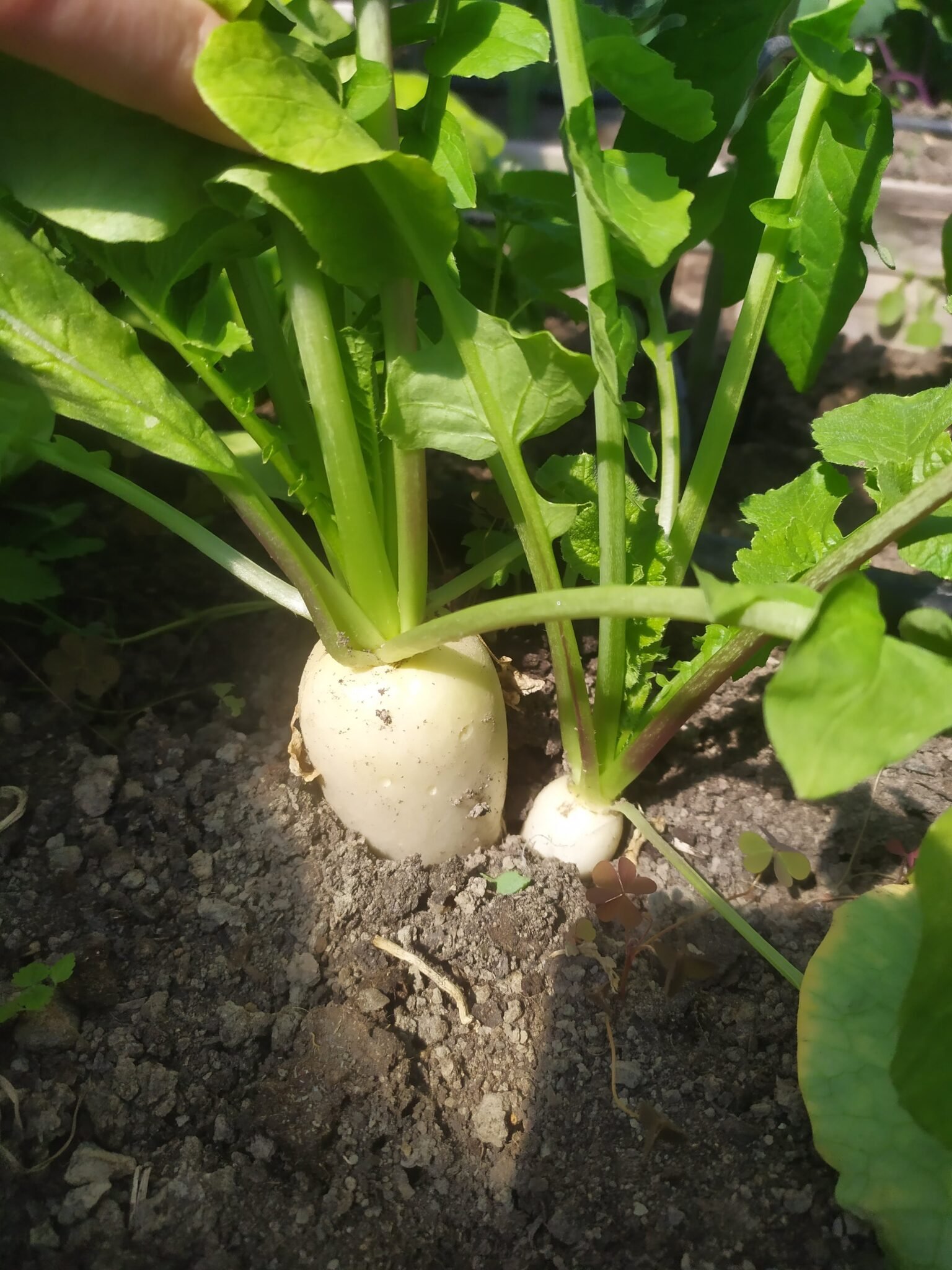
Whole fermented daikon
Day 1 – Pre-salting
Harvest the daikon when they are 2-4cm in diameter. Remove the leaves (use them as spinach or try making daikon stem kimchi – see below – cut a few millimeters from the top of the root so the leaves stay intact).
Rinse the roots thoroughly and layer with salt, approximately 6% of the weight (60g per kg of vegetables). Place a plate on top and something heavy like a rock or a bowl of water and let them sit overnight.
Day 2
Pour off the liquid that has been drawn out of the roots overnight and rinse. Then, tightly pack the roots into a fermentation container or glass jar and pour a 2-3% salt solution over them (20-30g per liter of water). If using a large container, place a weight or plate on top. If fermenting directly in smaller jars, simply put on the lid.
Leave at room temperature for 1-2 weeks, then transfer to the refrigerator or a cool cellar for an additional two weeks.
Slice before serving.
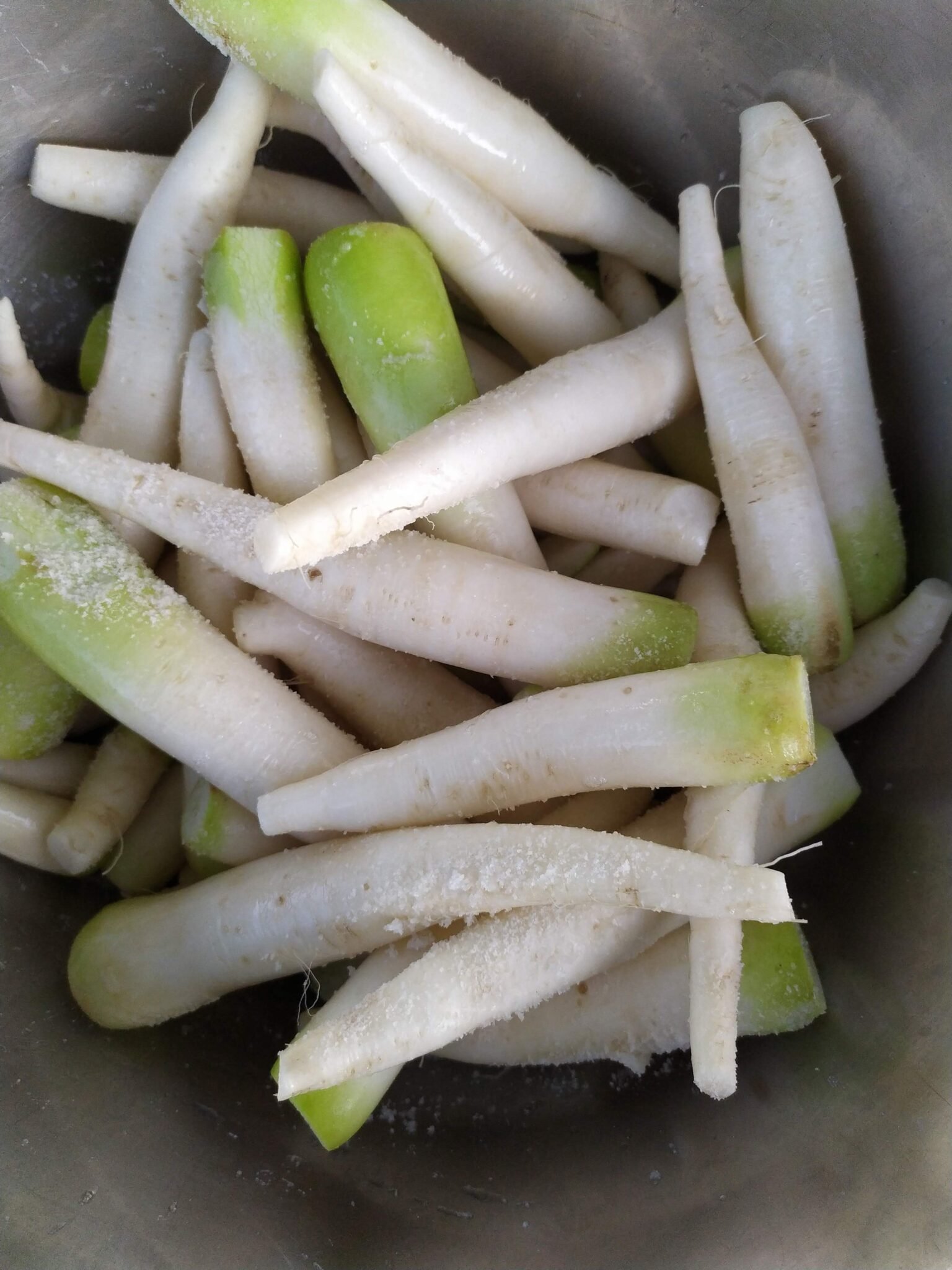

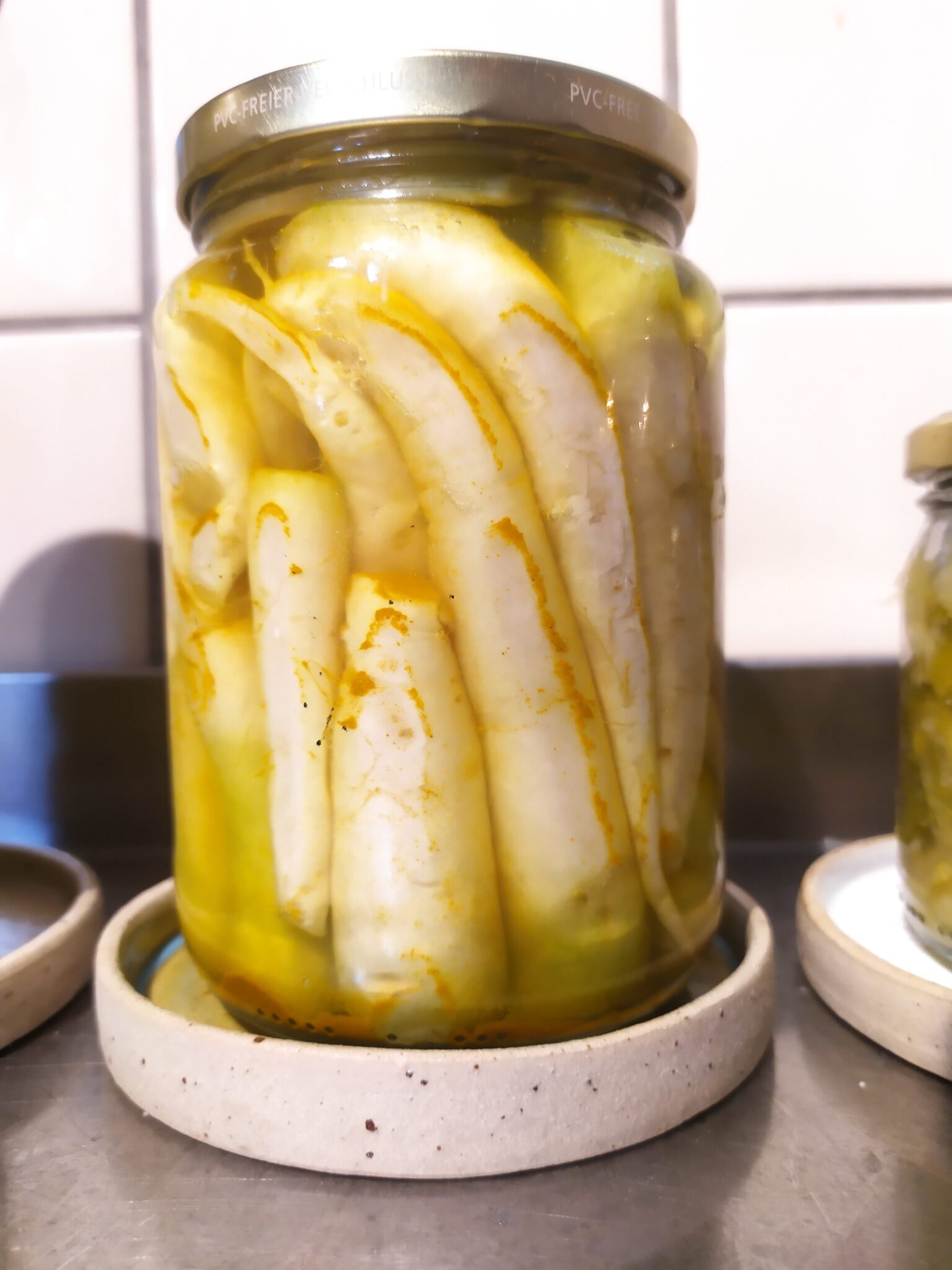
I love lacto-fermented daikon without any seasoning, but it’s also delicious with turmeric or by making a simple kimchi by adding a few garlic cloves, ginger pieces, one or more scallions, and some whole chili peppers – preferably fresh, but dried ones work too.
Wilted daikon – fermented
If you want to achieve something really special, try fermenting wilted daikon. This way, you’ll get a deep umami flavor, and it pairs well with a cheese platter or serves as a vegan alternative to salami.
Note: Wilted daikon can smell very pungent. I once cleared out a classroom of 30 people during a workshop just by opening the jar. The smell decreases with time.
Even though it may seem like a good way to use forgotten roots from the fridge, the result is much better to use freshly harvested vegetables. Harvest the daikon when they have a diameter of 4-6 cm. Remove the leaves and rinse the roots thoroughly. Let them wilt outdoors for a couple of dry, warm days, taking them indoors at nightor if its raining. Rinse again and layer with salt – approximately 6% of the weight of the vegetables. Place a plate and something heavy on top and let it sit overnight. Pour off the liquid and rinse lightly the next day, then pack tightly into a jar or container. I would recommend placing something heavy, like a boiled stone, on top. Let it sit at room temperature (preferably around 15-18°C) for at least 6 months, up to several years!

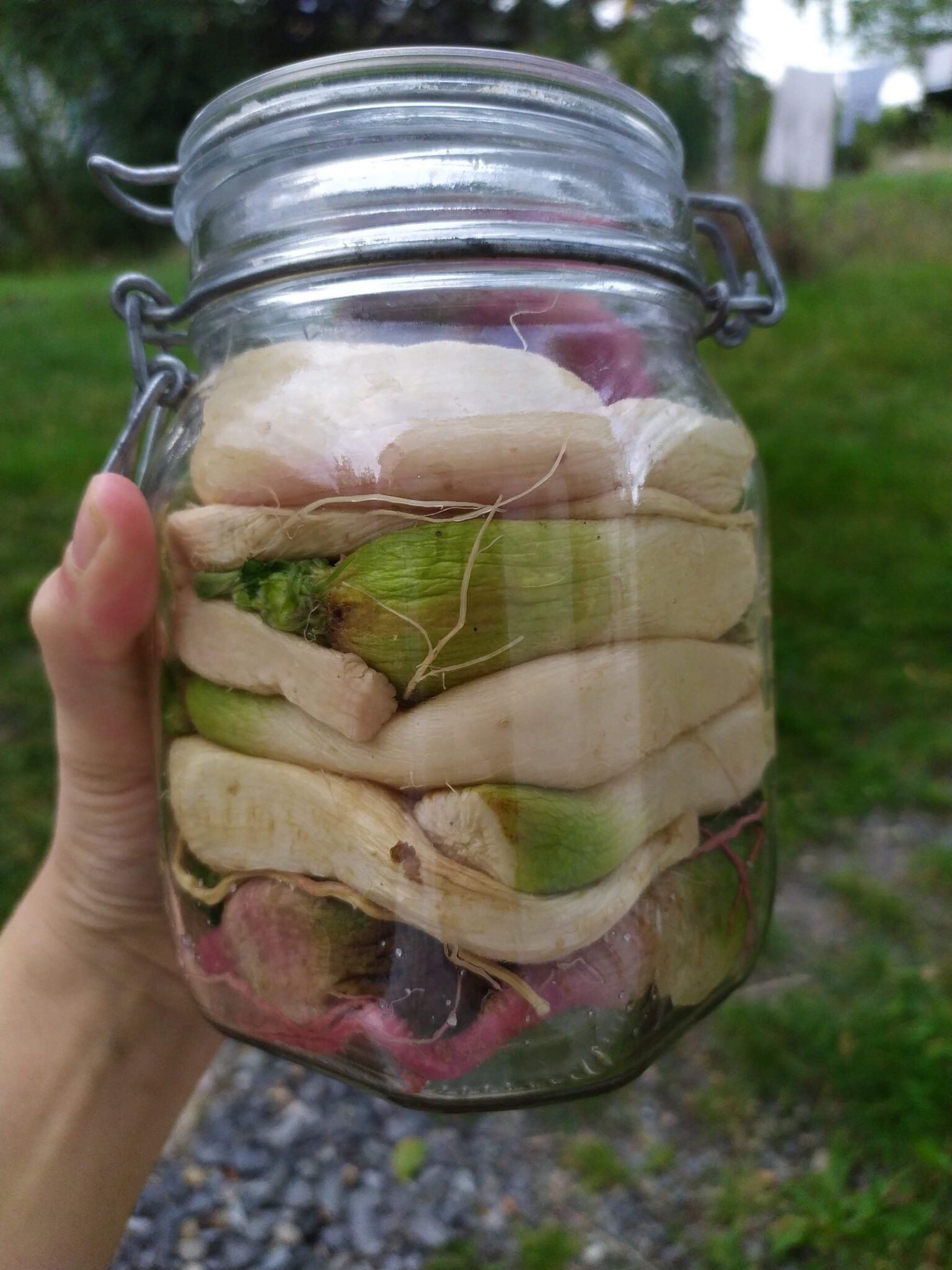
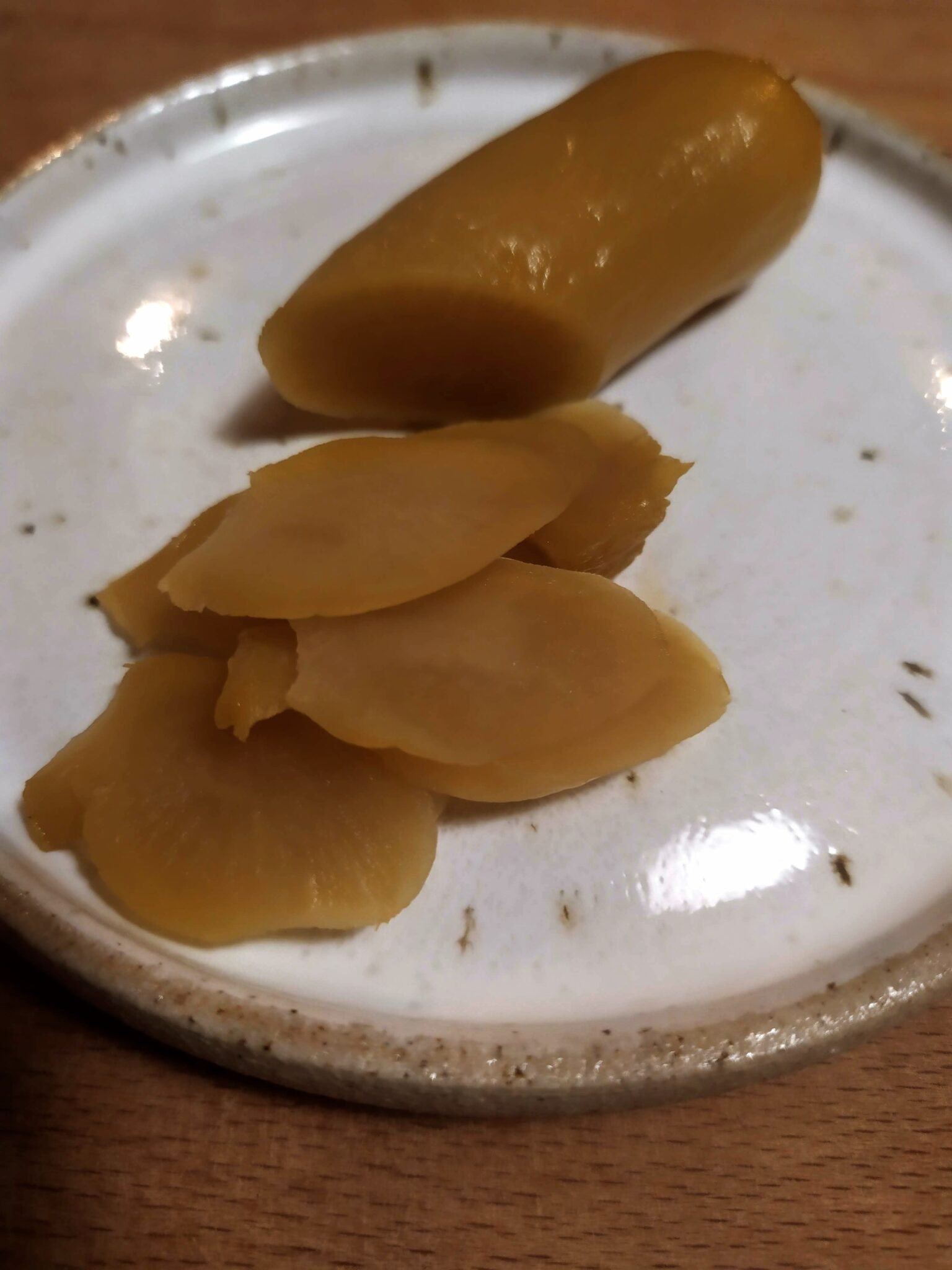
Daikon stem kimchi – pungent!
Rinse the leaves and remove any yellow/brown ones along with any less than lovely looking stems.
Cut off the leafy part at the top (use it in cooking – delicious!). Let the stems wilt slightly by hanging them outside on a moderately warm day or in the kitchen if the weather doesn’t cooperate. After a couple of days (if its very warm out 24 hours should do), rinse the stems and layer them with salt – approximately 6% of their weight. Place a plate and something heavy like a bowl filled with water or a stone on top. Let it sit for a few hours or overnight. Drain and rinse. Make a kimchi paste or try a simpler version by rolling the stems in chili flakes, finely grated ginger, and garlic. Pack them tightly into a jar or fermentation container and place a weight on top (if using a stone from nature, it’s a good idea to boil it for a few minutes first to clean it). Then, let it sit at room temperature for at least 2 weeks, up to several months. This kimchi has a strong flavor, and I have mainly used it in cooking with great results in curry, falafel, pumpkin soup, sauces, salads, and more.
